Table of Contents
- Ahrefs – Best for broken link discovery and analyzing high-performing content via Content Explorer.
- SEMRush – Top tool for link reclamation and overall backlink auditing.
- Talkwalker – Best for uncovering unlinked brand mentions with real-time alerts.
- Google (Search Operators) – Most accessible method for finding guest post opportunities.
- Moz – Industry standard for measuring Domain and Page Authority.
- SE Ranking – Best for anchor text analysis and assessing topical relevance.
- URL Profiler – Best bulk link auditing tool for detailed metric scraping.
- BuzzStream – Best all-in-one outreach tool from prospecting to relationship tracking.
- Hunter – Best for email discovery and format suggestions.
- NeverBounce – Best for bulk email verification and list cleaning.
- BuzzSumo – Best for finding high-social-share content with backlink potential.
- Exploding Topics – Best for identifying trending, emerging content opportunities.
- Siege Media Chrome Extension – Best for scoring a site’s linkability based on custom criteria.
- Check My Links – Easiest tool for identifying broken links on any webpage.
- Screaming Frog – Best for technical link audits and internal linking structure analysis.
- Majestic – Best for evaluating backlink trust and citation flow metrics.
- Link Whisper – Best tool for streamlining internal linking on content-rich sites.
- Search The Current Site Extension – Best shortcut for site-specific searches without leaving the page.
Building links is a time-intensive process. While it may be tempting to cut costs using shady SEO tactics to take advantage of Google’s algorithm, Google eventually catches up and penalizes many sites over time.
So, the best way to generate links is to use white hat tactics to build links naturally.
Luckily, there are ways to shave off time with link building tools that won’t lead you down the dark path to black hat link building.
Over the past ten years, I’ve tried numerous tools, and reviewed several tools for digital PR, content marketing, AI-powered PR tools, SEO Chrome extensions, and tools for blogger outreach. The tools ones below represent the most useful link-building tools on the market today.
Finding Link Opportunities
Let’s dive into the most essential part of link building: finding link opportunities. This section will explore the tools and strategies I’ve used to find the most valuable and relevant sites for building new links (or recapturing old links.)
1. Ahrefs – Finding Content With Broken Links
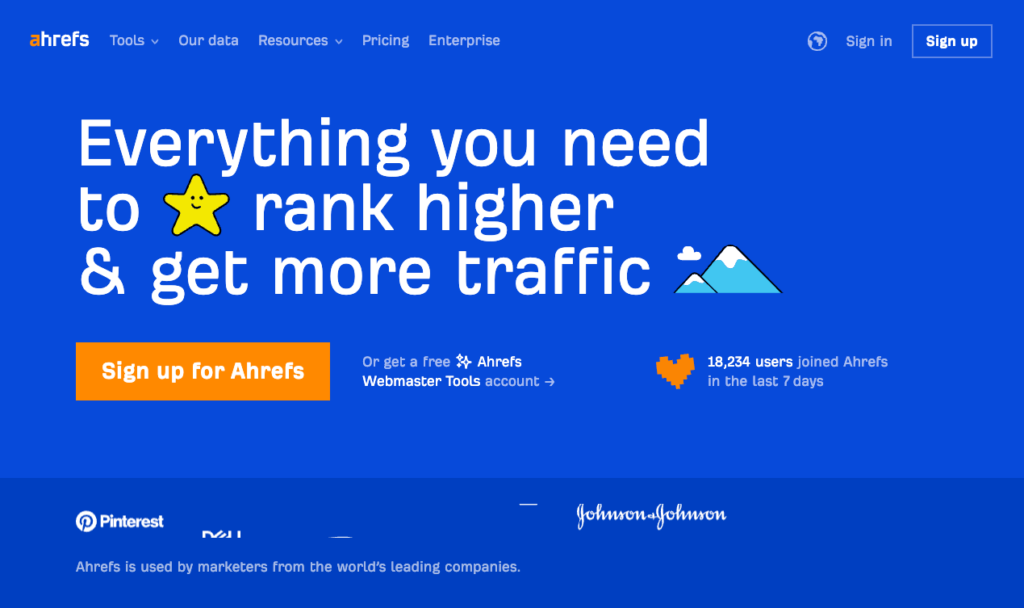
Ahrefs is an incredibly powerful link building tool; you’ll see it a few times on this list as well as on our digital PR tools list.
Ahrefs’ Site Explorer feature can quickly help you find broken links to a target website. Enter a target website and use the ‘Best by Links’ report to find pages with backlinks to no longer live pages (404 errors).
Then, you can reach out to these sites and suggest they replace the dead links with live links to relevant content on your site.
You can also use their Content Explorer to identify content that is no longer live (but still has traffic and backlinks.) Simply input your content idea and toggle the Live & Broken filter to Broken. Lastly, Ahrefs has one of the many helpful Chrome extensions that displays traffic and link information information directly on the SERP.
Pricing: $99/mo for Lite version
2. SEMRush – Discovering Link Reclamation Opportunities
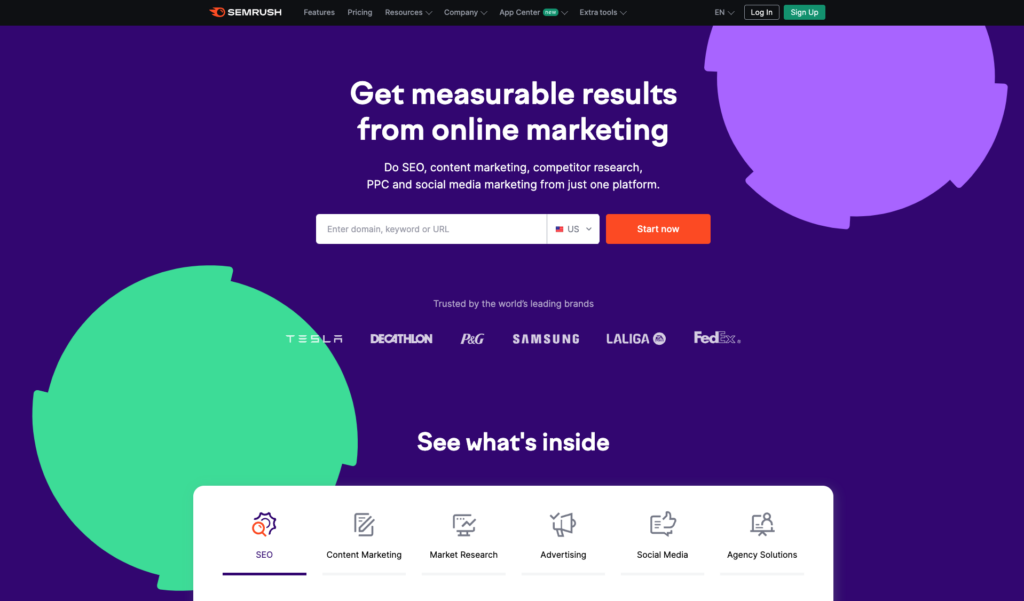
Link reclamation is the process of finding lost backlinks to your site and reclaiming them.
With the powerful SEO tool SEMRush, you can discover link reclamation opportunities using their Backlink Audit Tool. This tool identifies lost or broken backlinks to your website. Then, if the sites are valuable, you can email the website owners, requesting they restore the original link (or replace it with a new link).
The Backlink Audit Tool is just one of the many tools that SEMRush has in its arsenal.
Pricing: Free trial, $125/mo for Pro account
3. Talkwalker – Uncovering Unlinked Mentions

Whenever a website lists your site or brand without linking, this is a valuable opportunity to reach out for a backlink.
To uncover unlinked mentions using the social listening tool Talkwalker, you can set up free alerts for your brand or specific keywords. Talkwalker scans various online platforms and notifies you when your brand gets mentioned.
You can then reach out to the authors or website owners to request the addition of a link.
Pricing: Alerts are free
4. Google – Identifying Guest Post Opportunities with Advanced Search Operators

Google’s search operators are the easiest way to find guest post sites in your niche. Why pay for a tool when you can do this yourself? Here are the two best search operators for identifying posts open to guest contributors.
Intitle: operator – finds page with the operator in the title of the page
Inurl: operator – finds pages with the operator in the URL
Use these search operators in conjunction to find sites open to guest posts. Try operators like:
- Guest post
- Write for us/me
- Become a contributor
- Contribute to
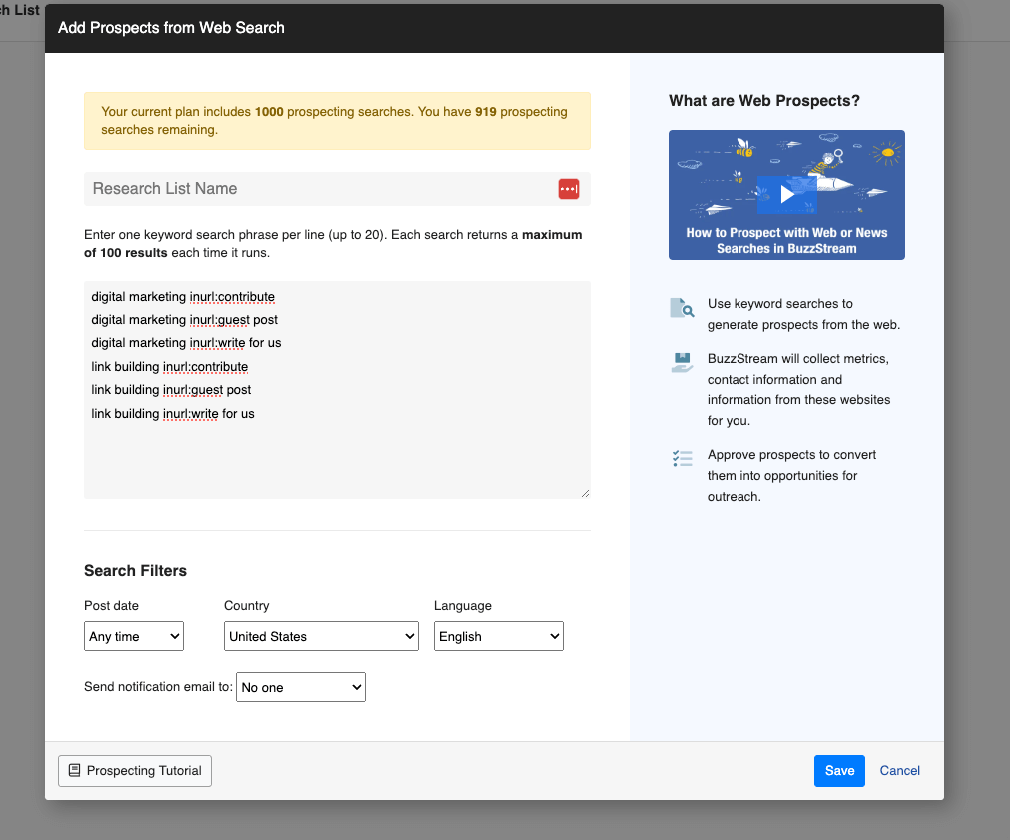
Pricing: Free
Researching and Validating Prospects
Once you’ve identified a list of backlinks, you need to do some vetting to ensure you are reaching quality targets. Here are some of the best tools to help with each.
5. Moz – Measuring Site or Page Authority
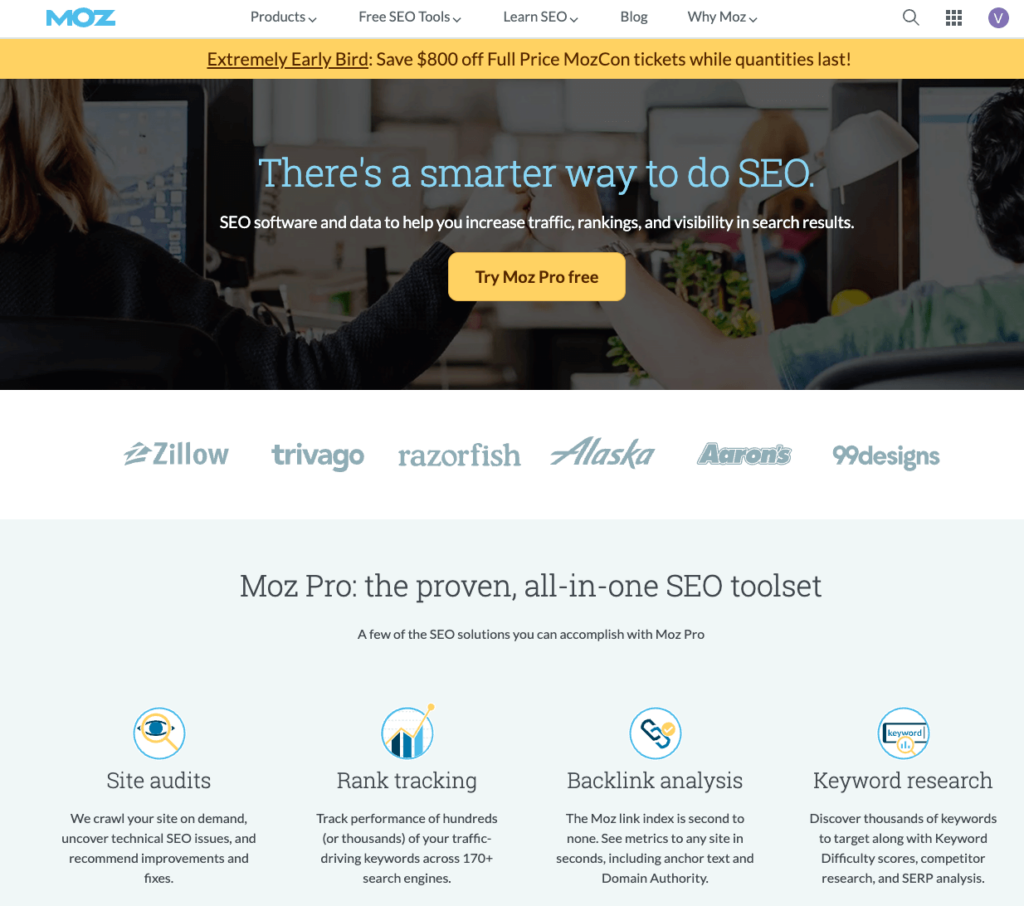
Moz is a mainstay in the SEO community and has created widely recognized, industry-standard link metrics known as Domain Authority (DA) and Page Authority (PA). Domain Authority helps evaluate the quality and potential of a website, ensuring that you focus efforts on building links from quality, relevant sites.
Simply enter the target website’s URL into Moz’s New Domain Overview tool, and it will showcase the URL’s metrics.
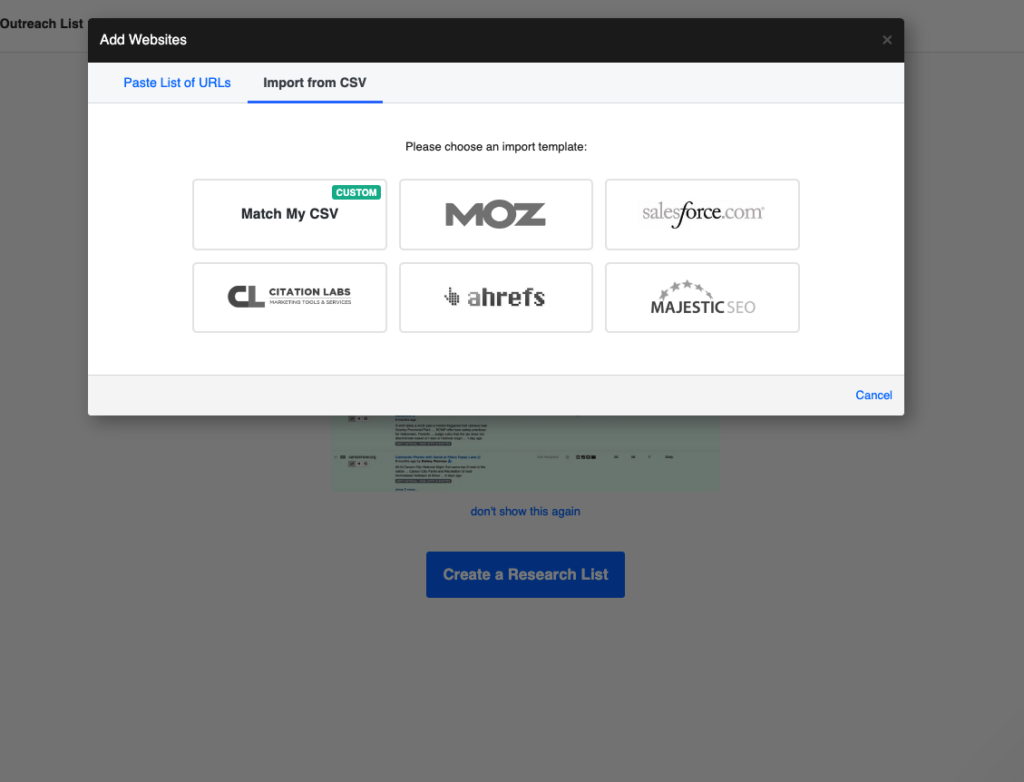
Pricing: Free limited SEO tools, $99/mo for Standard Moz Pro account
6. SE Ranking — Backlink Analysis
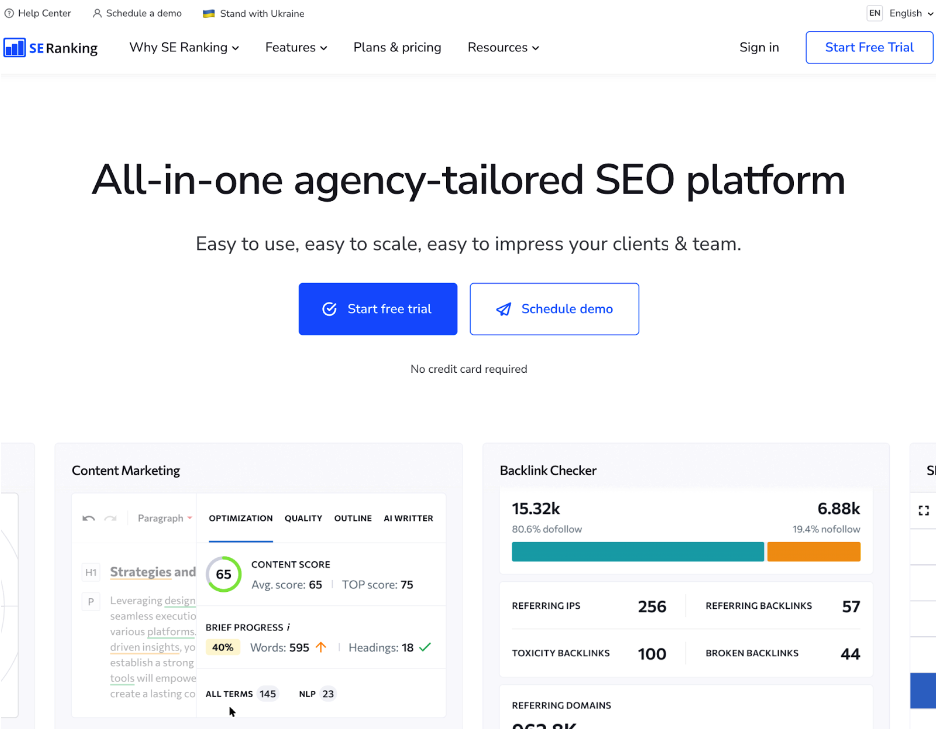
Although I already have a few similar tools, I want to shout out SE Ranking because of their backlink analysis tools. One of the things I’ve been focusing on these days is topical relevancy. With their anchor text analysis tool, you can get a sense of where/how Google may see your site from a topical authority standpoint.
They have common, helpful metrics like domain & page trust score, toxicity level, total traffic, anchor text, and more. But they also have a few less common features:
- Distribution of referring domains and backlinks by the homepage, internal, and other pages.
- Breakdown of referring domains by different countries.
Pricing: Starts at $55.00/month for the Essential plan
7. URL Profiler – Bulk Link Assessments
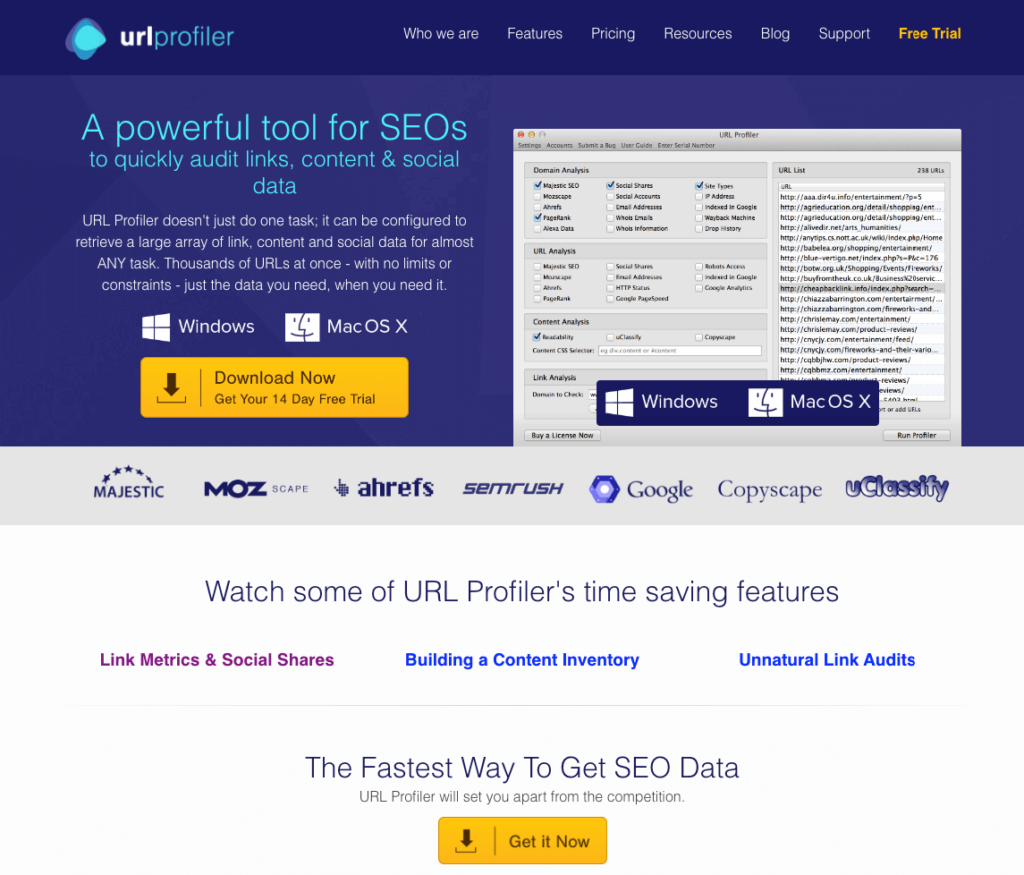
With URL Profiler, you can conduct bulk link audits by importing a list of URLs you want to analyze. The tool then fetches various SEO metrics for each URL, such as Moz’s Domain Authority (DA), backlink counts, and social shares. This bulk analysis helps quickly assess the quality and relevance of numerous backlinks, which can help you identify valuable links and potential risks like spammy or low-quality links.
Many other tools display metrics like URL Profiler, but none are as thorough and easy to use as URL Profiler.
Pricing: $19.95/mo for Solo plan
Finding Contact Information and Sending Emails
Discovering the proper contact information is crucial to a successful link building campaign. Here are some tools to keep in your kit to help you identify emails and social.
8. BuzzStream – Best All-in-One Outreach Tool
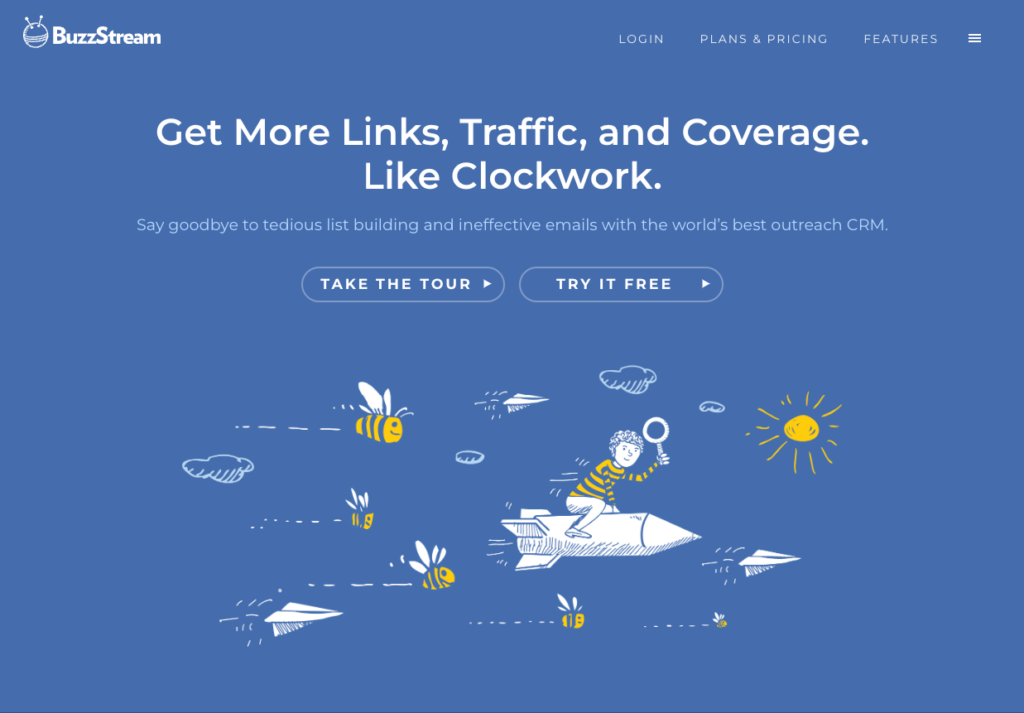
BuzzStream is a powerful tool built for end-to-end link building outreach management. Its four main features help link builders from the prospecting phase to the reporting phase.
Prospecting and Emailing: BuzzStream helps users build prospecting lists and find email addresses for potential link-building opportunities. Users can then send (or schedule) personalized email sequences directly to prospects, track the status, and manage follow-ups, all in one place.
(You can even set fall-back contacts if your initial contact doesn’t reply!)
This prospecting process gets streamlined using the Buzzmarker, a Chrome extension that allows you to do everything without leaving the browser.
Contact Information: Buzzstream can instantly scan the site to find someone’s email address or social media accounts. When adding a new contact, you can also integrate with Hunter.io to identify harder-to-find email addresses.
Relationship Tracking: BuzzStream keeps track of all interactions with potential link partners across their entire database. This ability allows you to build and maintain relationships with key influencers and website owners.
This feature is handy for larger marketing teams or agencies with multiple members doing outreach simultaneously. (The worst thing you can do as a link builder is spam a website after they’ve already said no or just granted you a link for a different campaign.)
Reporting and Analytics: Users can generate reports to analyze the success of their link-building efforts, track progress over time, and make data-driven decisions to improve their strategies.
Pricing: Free trial period, $24/mo for Starter plan
9. Hunter – Finding Email Addresses
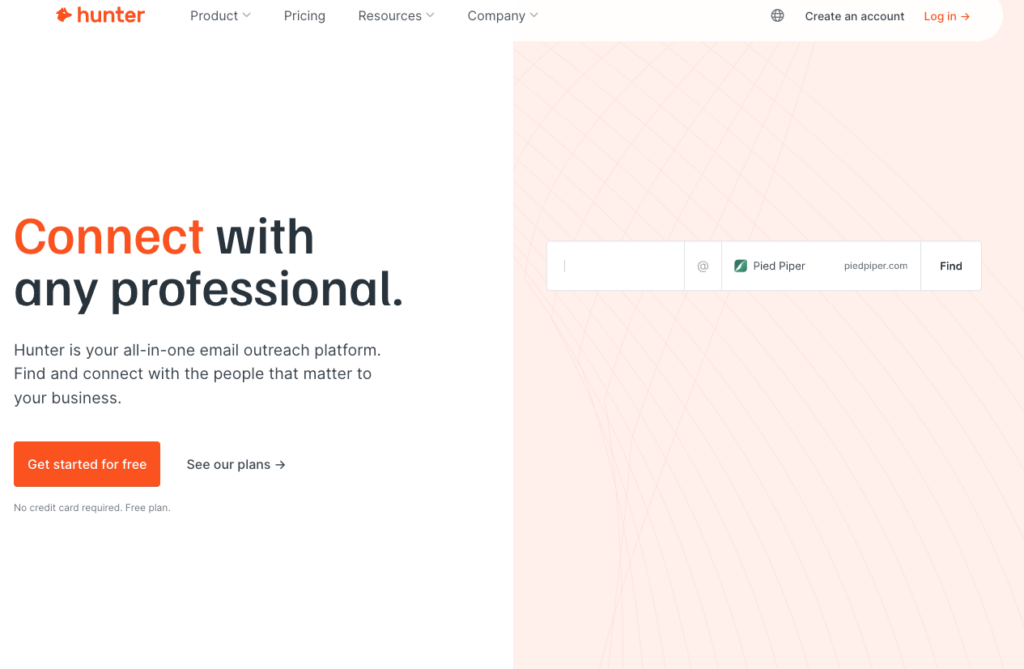
Hunter helps find contact information by searching for and verifying email addresses associated with a specific domain. Without a proper email address, there’s very little chance your campaign will yield links. Contacting a person is critical. You have less of an opportunity for success emailing a general “info@” email address.
One thing we love about Hunter is that even if the tool cannot find or verify the exact contact’s email address, Hunter also provides a suggested format based on other found contacts from the same domain. Then, you can use their tool to verify the email address.
Pricing: Free for 25 monthly searches, $34/mo for Starter plan (gets you 500 searches)
10. NeverBounce – Bulk Verification
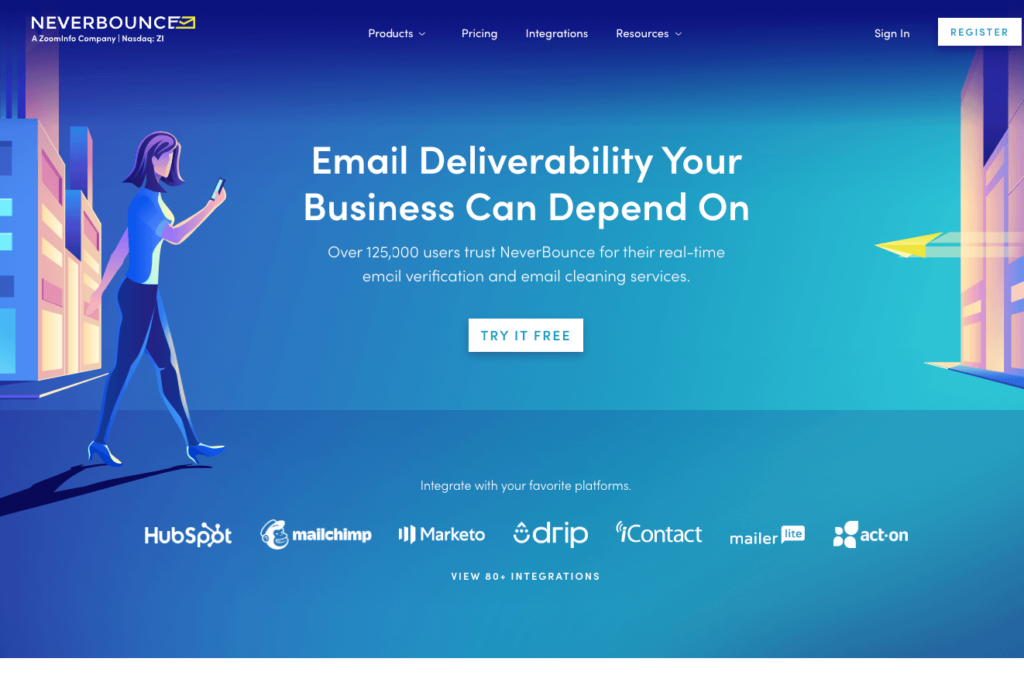
NeverBounce is an email verification service that cleans and validates email lists. Accurate email lists mean higher chances of successful contact.
While tools can verify individual email addresses (like Hunter), we’ve found NeverBounce especially helpful when verifying a large list of emails for link building.
An added benefit of verifying email addresses before sending —especially in the case of bulk emailing— is that it reduces the number of bounced emails, which is critical to maintaining a good sender reputation and avoiding being marked as spam.
We recommend using a tool like NeverBounce to keep up with Google and Yahoo’s new email requirements.
Pricing: Pay per email – See pricing page
Generating Linkable Content Ideas
One aspect of link building is creating and pitching content for links. You can use something like the skyscraper technique to create something better than an existing post. Or you can create a fresh, shareable piece of content, such as an infographic or survey campaign, and pitch it for links.
Here are some of the go-to tools for creating linkable content.
11. Ahrefs Content Explorer – Finding Existing Content With Links
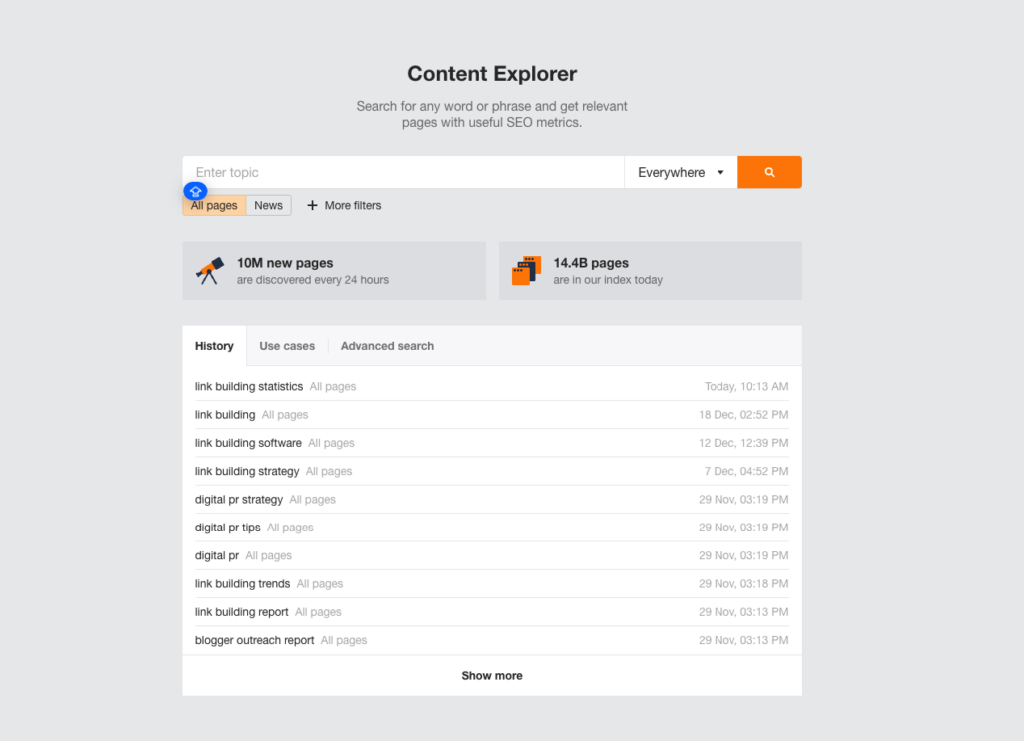
Ahref’s Content Explorer tool is essential for identifying content topics that generate links.
Enter a keyword and explore the top-performing content for that keyword. Ahrefs will display metrics like organic traffic, backlinks, and traffic value, giving you an idea of what content generates links.
Use filters like estimated traffic, domain authority, publication date, and content type to refine your search and find hidden gems.
You can also enter a competitor domain to identify content that your competitors have created. This content can help you ideate ways to fill in gaps and create new or better content than your competitors.
Pricing: $99/mo for Lite version
12. BuzzSumo – Finding Existing Content With Social Shares

Although social shares are not the same as backlinks, content with high social shares always has solid link potential when pitched for backlinks.
BuzzSumo’s Content Analyzer tool helps identify content with shares on Facebook, X, Reddit, Pinterest, and backlinks. Enter a topic or keyword, and it will display posts from the web. Then, use filters like Domain Authority or Date to find in on the most valuable, recent content ideas.
One extra feature that BuzzSumo has is the ability to identify users who have shared the content if you wish to pitch your content using social media.
Pricing: $199/mo for Content Creation tier
13. Exploding Topics – Finding Trending Topics
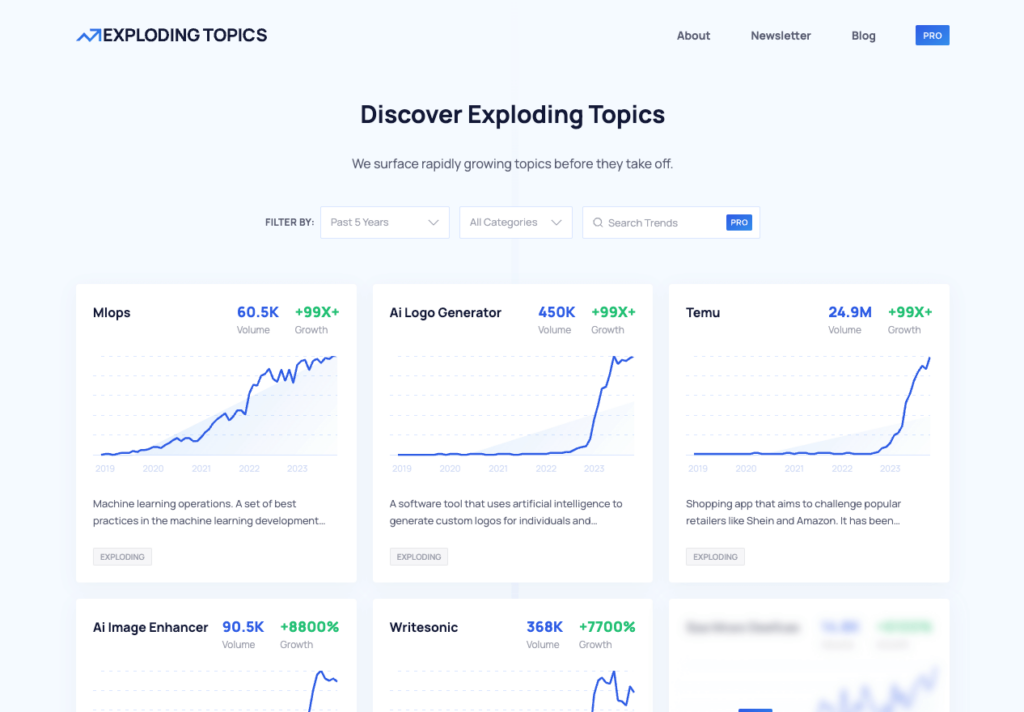
You can use Exploding Topics for link building by identifying emerging trends and topics within your industry. Creating content around these growing trends makes your pitch much more valuable. This proactive approach can also attract backlinks from other websites seeking to reference the latest information.
As Brian Dean said in our podcast, “What sets us a little bit apart from Google Trends in general is that we’re more focused on longer term trends, not fads.”
Simply visit the website and scan through the list of categories to find the best fit. With a Pro account, you can also unlock the search feature.
Pricing: Free with limited features, $39/mo for Pro
Bonus Tools For Link Builders
Here are some tools that not a lot of people know about, or don’t realize how well they work as part of a link building strategy.
14. Siege Media Chrome Extension – Validating a Target Site’s Propensity to Link
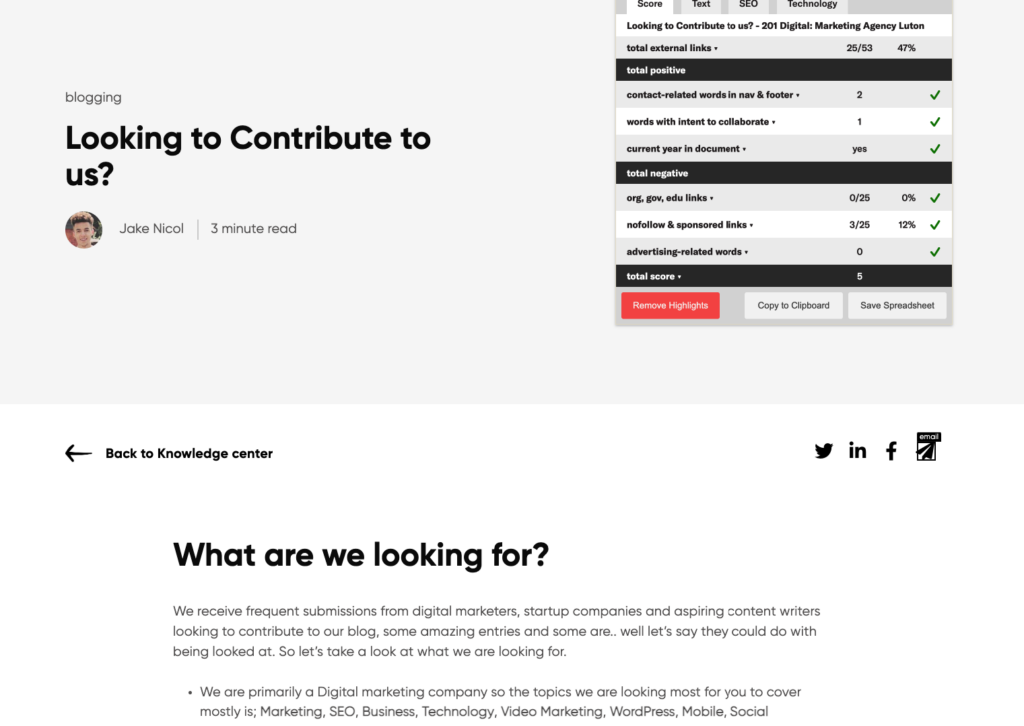
Siege Media’s Link Prospecting Scorecard Chrome extension evaluates a website’s link building potential.
Content marketing agency Siege Media created the tool based on their teams’ years of insights and experience (including my own) with link building.
When visiting a URL with the tool enabled, you’ll see a score based on metrics like “words with intent to collaborate” or the number of nofollow and rel=sponsored links.
While a tool like this will never be perfect and still requires a keen eye for specifics, it is an excellent support tool that gets you closer than anything else.
Pricing: Free
15. Check My Links Chrome Extension – Checking for Broken Links on Page
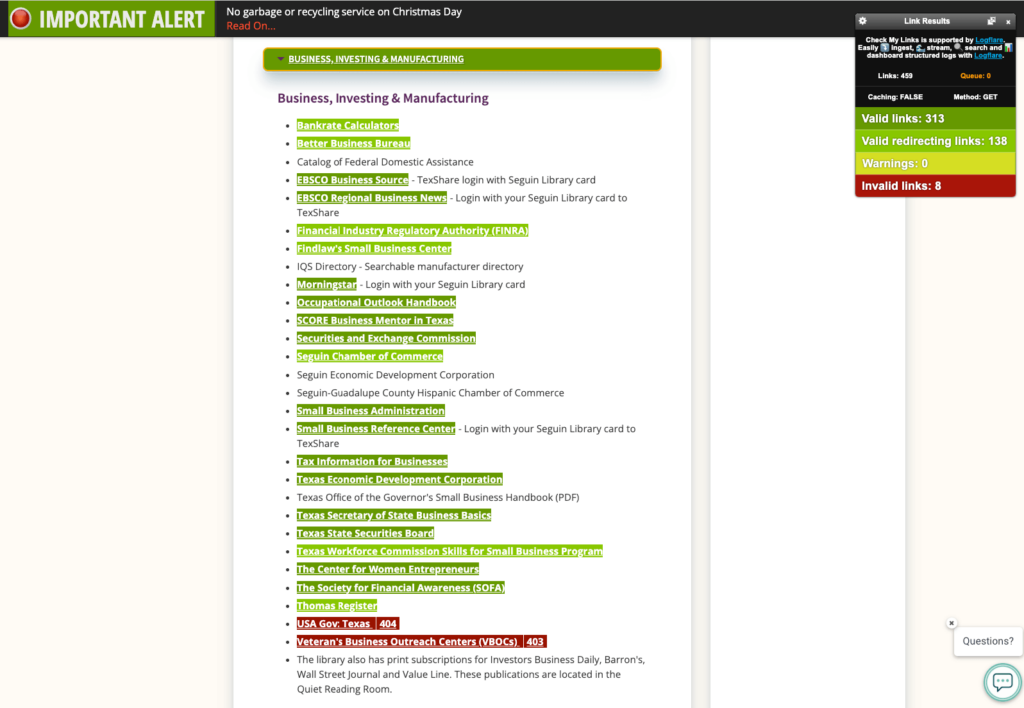
Check My Links Chrome extension allows you to see all of the broken links on a page easily.
When doing a broken link building campaign, seeing the broken links on a target page can be extremely helpful. Once you see a broken link, you can use it within a broken link building campaign.
Ahref’s also has an SEO Toolbar that shows broken links on a page, though it takes one extra click, which can add up when you are analyzing many sites at once.
Pricing: Free
16. Screaming Frog – Technical SEO
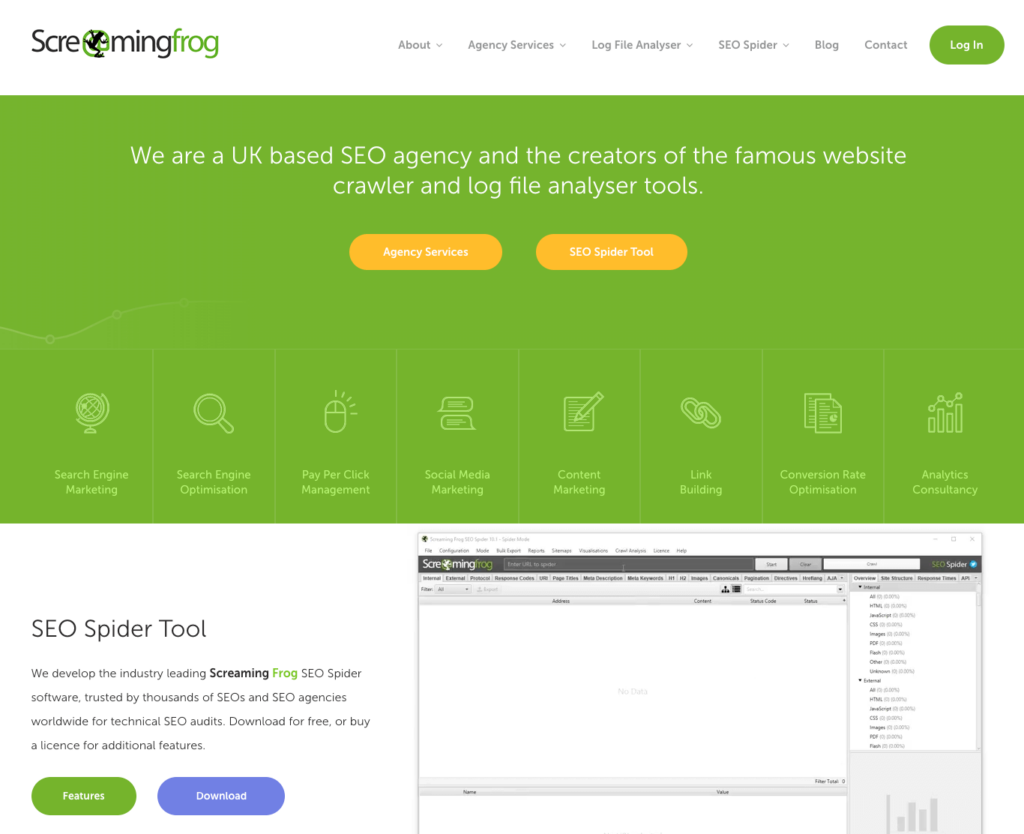
Screaming Frog is an SEO tool primarily used for website crawling and analysis. For link builders, you can use Screaming Frog to audit a site’s existing links, identify broken links, and analyze the site’s overall link structure. Their feature set is excellent for optimizing internal linking, finding external link opportunities, and repairing broken outbound links.
Pricing: Free with limited features, $259/yr for the full version
17. Majestic – Analyzing Backlink Profiles
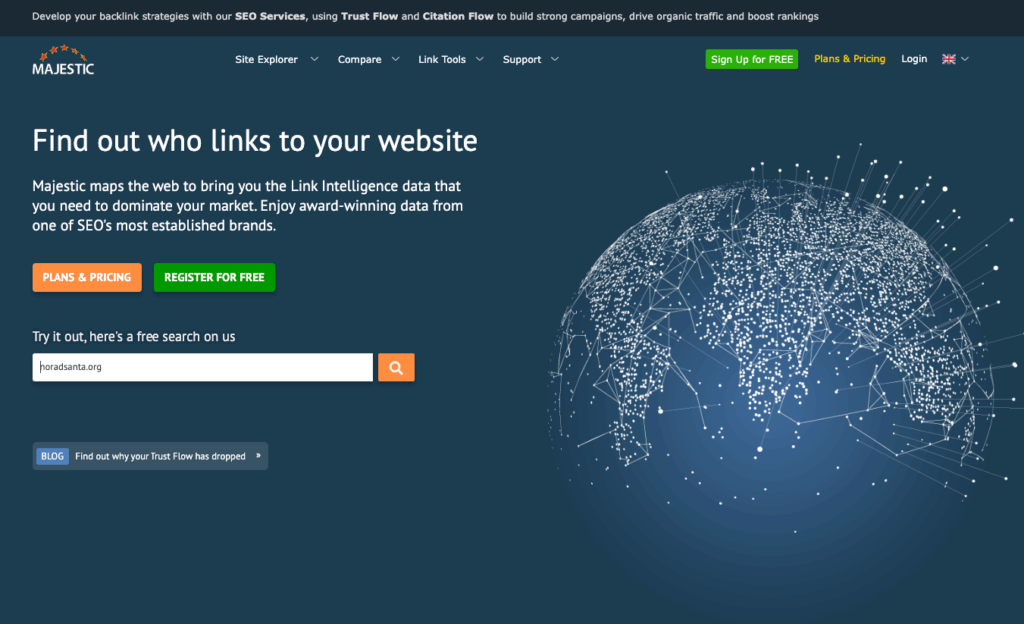
Majestic is a specialized tool in the SEO arsenal, particularly for its focus on link analysis. It has two metrics that are used widely within the link building community to assess a website’s link quality and influence: Trust Flow and Citation Flow.
Trust Flow evaluates a site’s trustworthiness based on the quality of its inbound links. Citation Flow measures the influence of a site by counting the number of links pointing to it (focusing on quantity rather than quality.) A balanced relationship between high Trust Flow and Citation Flow indicates a website with a healthy, authoritative link profile.
Majestic also visually represents a site’s link profile with its Link Graph, making it easier to understand the link ecosystem surrounding a website. Its tools are handy for those looking to build a network of high-quality, trustworthy links and those looking to understand a new industry.
Pricing: Starts at $49.99/mo for the Lite Version
18. Link Whisper – Best Tool for Building Internal Links
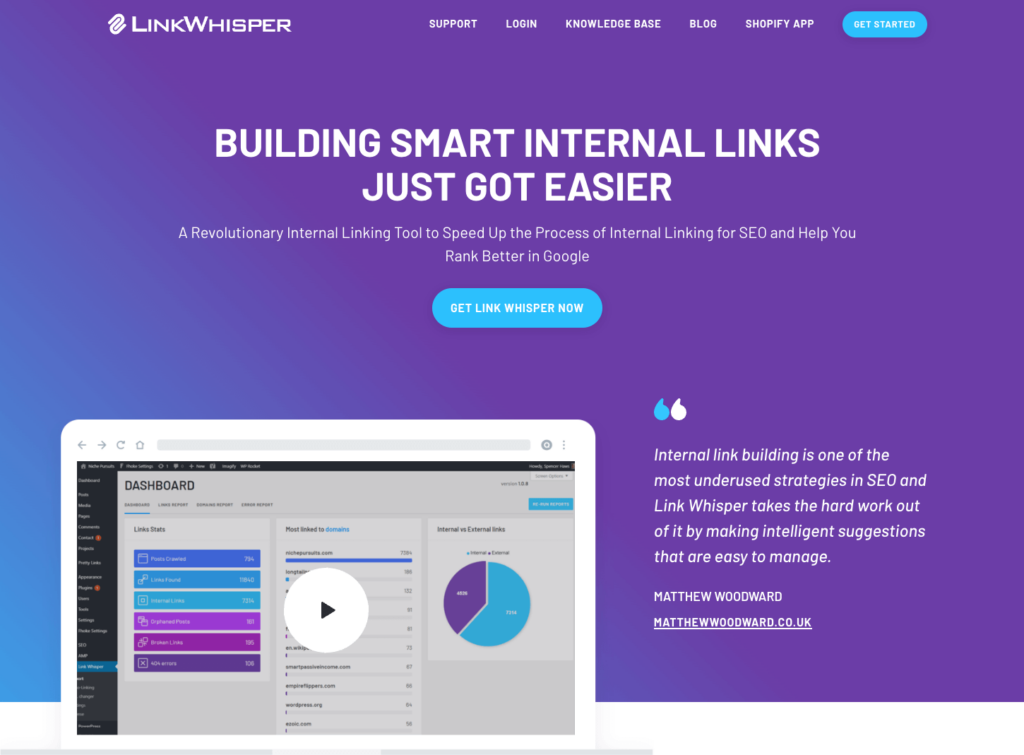
Once you’ve built links, ensuring their value appropriately flows to your priority pages is a critical step often overlooked.
Link Whisper streamlines the process by suggesting relevant internal links and quickly adding them, ensuring your website is well-structured and interconnected. This tool is handy for larger or older sites with many posts and pages.
Pricing: $77/yr
19. Search The Current Site Chrome Extension
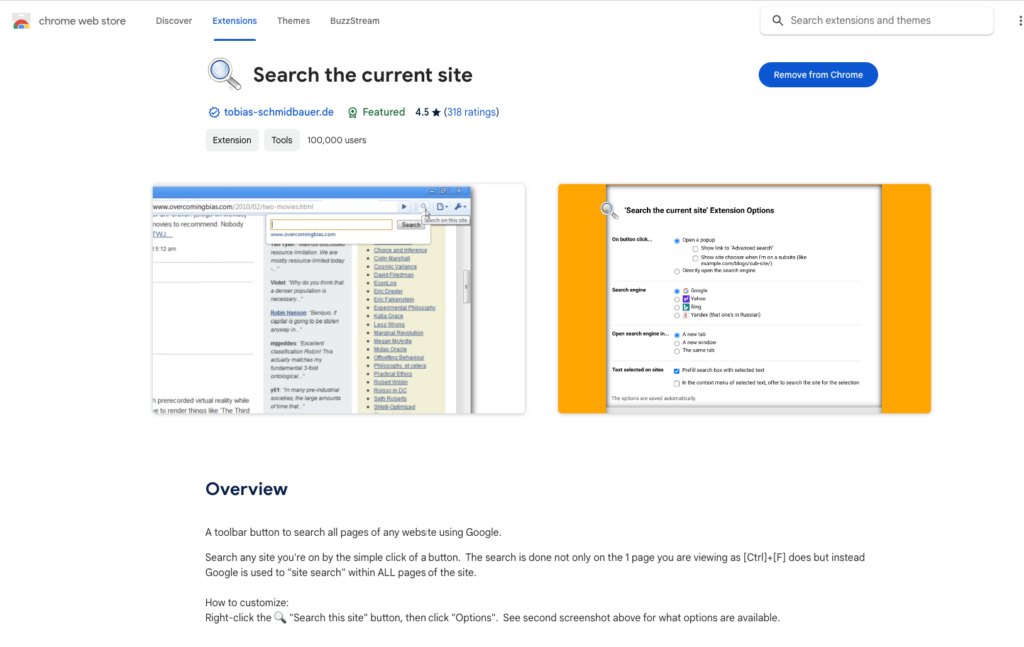
When trying to find content on a specific site, you can use the search operator site: operator in Google. However, one tool that speeds this up is the Search The Current Site plugin, which eliminates the step of opening up a new Google search every time.
If you are looking for relevant content to reference in a pitch, you can easily search the site you are on by typing the search term right into the plugin.
Pricing: Free
How to Choose a Link Building Tool?
To choose the right link building tool, you’ll want to make sure it aligns with your goals as a brand, agency, or solo link builder. Here are three main things to consider when deciding on the tools to employ in your link building campaigns.
1. Identify Your Objectives
Before choosing a link building tool, clearly define your link building objectives. Whether it’s improving a site’s authority, boosting traffic, or both, your goals will dictate the tactics you will need to employ. Then you can match the tactics to your tool.
2. Research Features and Functionality
Consider the specific features each link building tool offers. Do you need a tool for detailed backlink analysis, broken link identification, or content promotion? Some tools specialize in certain areas like helping you find top shared content or analyzing an existing link profile.
Some are narrowly focused tools, while others feature an array of features that may span the full digital marketing spectrum.
3. Evaluate Budget and Integration With Existing Tools
Budget is an obvious consideration—and you don’t want to be paying for multiple tools that do the same thing. Additionally, consider how well the tool integrates with other platforms you’re already using. Efficient integration can save time and improve workflow. For instance, using Buzzstream with a Hunter subscription can maximize your contact-finding efforts.
Finally, don’t forget to research user reviews, ask forums, and most importantly, your peers.
Is Link Building Still Relevant?
Yes, link building is still highly relevant in the world of SEO. Despite what you may hear, links are still the main way that Google traverses and indexes content on the web.
The kind of link building that is no longer relevant is building unrelated links to a site in hopes that the sheer quantity of links will help rank, regardless of the quality.
Google has recently said that quality, relevant links are the most impactful link that SEOs should build.
What Are Link Building Techniques That Work Today?
Link building techniques that work today can range from site to site. One common technique is content creation and promotion, where you create high-quality, valuable content and promote it to attract backlinks back to your site.
Guest blogging is another technique that involves writing and publishing an article on someone else’s website or blog. This practice can help gain backlinks and exposure for a brand.
Additionally, broken link building, is where you identify broken links on other websites and offer your content as a replacement.
Link reclamation is the process of re-acquiring links that you used to have but have since been deleted or removed for one reason or another.
Unlinked mention outreach is a link building technique where you identify instances where your brand is mentioned online but not linked to your website. The goal is to reach out to the authors or site owners and request that they add a link to your site.
Both link reclamation and unlinked mention campaigns are especially helpful for SaaS link building projects.

 End-to-end outreach workflow
End-to-end outreach workflow



 Check out the BuzzStream Podcast
Check out the BuzzStream Podcast







